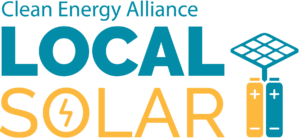 Help expand the availability of local renewable energy resources through Local Solar!
Help expand the availability of local renewable energy resources through Local Solar!
Local Solar is Clean Energy Alliance’s (CEA) feed-in tariff (FIT) program for smaller-scale renewable energy projects. Energy produced by the sites would be sold to CEA and sent to the grid for community use.
To participate, interested organizations must apply through the process outlined below; in the initial phase of this program, CEA will approve a maximum of four projects totaling up to 2MW of solar generating capacity.
Eligibility
Eligible projects must:
- Have an intended minimum project size of 500kW (approximately 3 acres of ground and/or rooftop space), and a maximum project size of up to 1 MW.
- Be a California Energy Commission-certified renewable generating resource
- Be a new build project
- Be located within CEA’s service territory, a CEA customer and able to connect to the SDG&E grid
- Transfer renewable energy certificates to CEA
- Deliver under a non-negotiable 20-year Power Purchase Agreement with a base price of $85/MWh
- Submit an application with a deposit of $500; a position in CEA’s FIT queue will be established only upon acceptance of a complete application
Additional Criteria:
- Financial bonus:
- Projects with co-located battery storage (at least 0.5kW storage for 1kW of generating capacity) are eligible for a $15/MWh bonus during the first five years of delivery term
- Queue position bonus (FIT queue priority given to projects):
- Previously developed site (limiting environmental impact to undeveloped sites)
- Development is consistent with CEA’s Inclusive & Sustainable Workforce Policy (local business/local hires/local apprenticeship programs used, prevailing wage)
- Project has a tendered Interconnection Agreement
Application Process
Interested in applying? Here are your next steps:
- If you are a site owner, consider partnering with an experienced renewable energy project developer to submit an application. Please contact procurement@thecleanenergyalliance.org for information on local developers who may be interested in partnerships.
- Review the CEA FIT Schedule and PPA linked below to understand the program requirements and eligibility prior to starting the application.
- Complete all sheets in the Local Solar Application. If you answer any question with N/A, please explain why it does not apply to your project.
- Complete all cells highlighted in yellow and provide complete information for each field.
Email completed applications and questions to procurement@thecleanenergyalliance.org.
